The Japanese Maple is a spectacular tree that is suitable for most landscapes. It can be grown as a small single-stemmed tree or a multi-stemmed shrub. Japanese Maples, also known as Lace-Leaf, is one of the most attractive and valuable trees in any garden, so if you’re lucky enough to have one on your property, you want to treat it right.
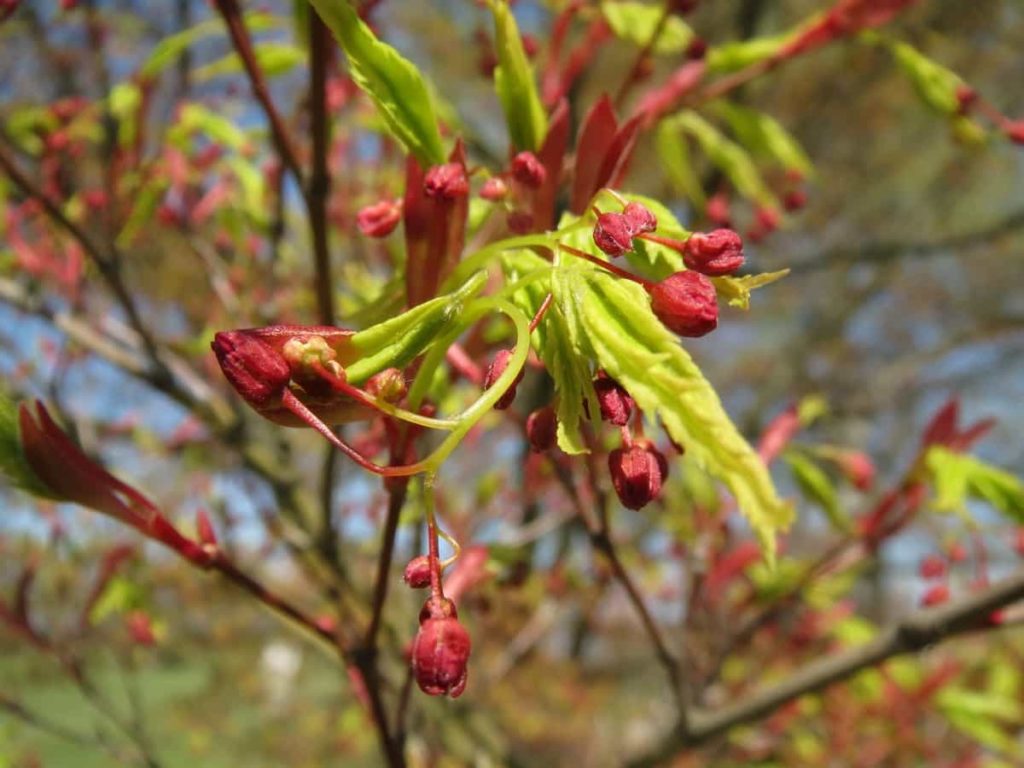
How to grow Japanese Maple tree
Best Japanese Maple varieties
| Geisha Gone Wild | Green Cascade |
| Butterfly | Higasayama |
| Fireglow | Hogyoku |
| Hogyoku | Koto Ito Komachi |
| Coonara Pygmy | Lion’s Mane |
| Golden Full Moon Maple | Osakazuki |
| Beni Kawa | Red Dragon |
| Coonara Pygmy | Scolopendrifolium |
| Autumn Moon | Seiryu |
| Beni Kawa | Usugumo |
| Butterfly | Velvet Viking |
| Coral Bark | Villa Taranto |
| Crimson Queen | Viridis |
| Emperor One |
The best soil conditions for growing Japanese Maple
The ideal soil for this plant is sandy soil with plenty of organic matter in the soil. However – Japanese Maples will grow in almost any soil condition as long as the soil is not wet. Make sure your Japanese Maple is planted in sandy, acidic soil, such as an azalea plant mix or a mixture of 30% peat moss, 40% sand, and 30% native soil.
When you feed, fertilize your Maple with an organic acid mix fertilizer to maintain soil acidity. A high-perlite soil is ideal for Japanese Maples that will be watered regularly by an irrigation system. The better the soil conditions, the better Japanese Maples can withstand other adverse growing conditions, such as wind, water problems, heat stress, insects, and diseases.
In case you missed it: Japanese Garden Design, Elements, Plants, History, Facts
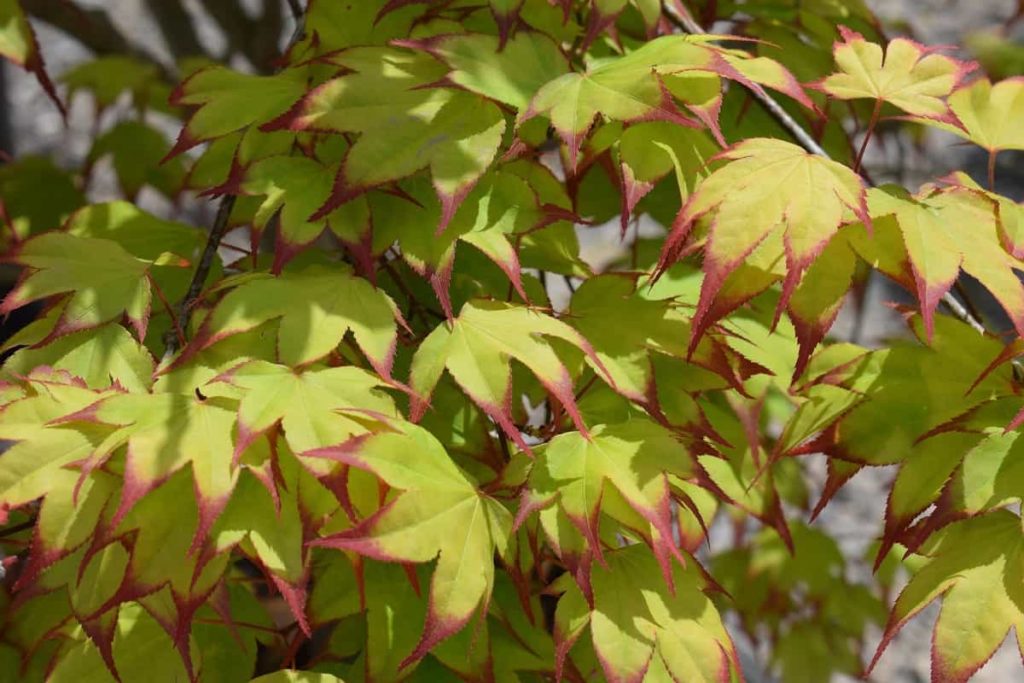
How to propagate Japanese Maples
Japanese Maple can be propagated from softwood cuttings that will be ready for transplant after about a year. Begin the propagation process after the last frost, after the first leaves form, or in early summer. Japanese Maple trees are propagated by seed and grafting. Seed propagation is quite easy, and anyone can do it at home. The first step is to collect the Japanese Maple seeds from the tree.
The seeds ripen in the fall and when they are ripe. Turn brown, and they are ready to harvest. Then, they will be attached to a wing, but breaking it off is best before storing or planting the seeds. Japanese Maple seeds come with a very hard outer coating and will take about two years to germinate if planted in uncultivated soil. However, a person can improve the odds of germination and shorten the cycle by following some guidelines.
Once the seeds have been picked and the fins removed, place them in a bag and store them in a cool place. About 100 days before the planting date, take the Maple seeds and place them in a pot that can withstand heat. Water. Pour warm to hot water over the seeds and let them soak for 24 hours. Firstly, most seeds will float, but after about 24 hours, most will settle to the bottom, then drain the water. The trick is to place the seeds in a plastic bag with a mixture of sand and peat.
It must be moist but not soggy, then poke holes in the bag for circulation and refrigerate it for 100 days. After that, the seeds can be planted outdoors (during the right weather) for 100 days. Dry completely before watering again. Once they start germinating, they need about 50% shade to avoid full sun. Therefore, another method used to propagate Japanese Maple is through grafting.
Grow a Japanese Maple in a pot
Japanese Maples are excellent ornamental trees for growing in containers. Their short stature and relatively slow growth rate make them perfect for containers. Below are points considered for growing potted plants:
- Select a dwarf Maple variety that matures at less than about 10 feet. Even larger plants will work if you prune them annually.
- Select a container that is no larger than twice the volume of the roots. Make sure there is a drainage hole. Japanese Maple plants will not survive in soggy soil. Use quality potting soil but not one with slow-release fertilizer that can burn the roots.
- Use a good quality potting mix for growing a Japanese Maple tree in a container. Add a little fertilizer. When growth begins in the spring, apply a water-based fertilizer diluted to half strength.
- Japanese Maples grown in containers need to be fed more frequently than trees grown in the ground. When you water, nutrients are lost from the drainage holes. Feed these dwarf trees twice a year in early spring and mid-to-late summer with an inexpensive fertilizer.
- Japanese Maples like constant moisture and will not grow well if they experience constant drought. It’s one thing to keep trees in the groundwater, but it’s another for trees in containers.
- Prune mid-summer to shape the plant or keep it at the desired size. Individual branches can be hung downwards in a more graceful habit by hanging light weights on the branches for one growing season. Repeat once the roots reach the sides and bottom of the pot, usually every two years. Prune roots by cutting off large, woody roots to encourage smaller fibrous roots to form.
- Japanese Maples are kept in a sheltered location during the winter after the foliage falls off in the fall. Next, move the plant to an unheated garage or basement where the temperature stays above freezing (an attached garage works great). When the tree is dormant, light is not needed. Keep the soil moderately moist until the Maple returns outside in the spring.
In case you missed it: How to Grow Primrose in Your Garden: Simple Steps Planting, and Care
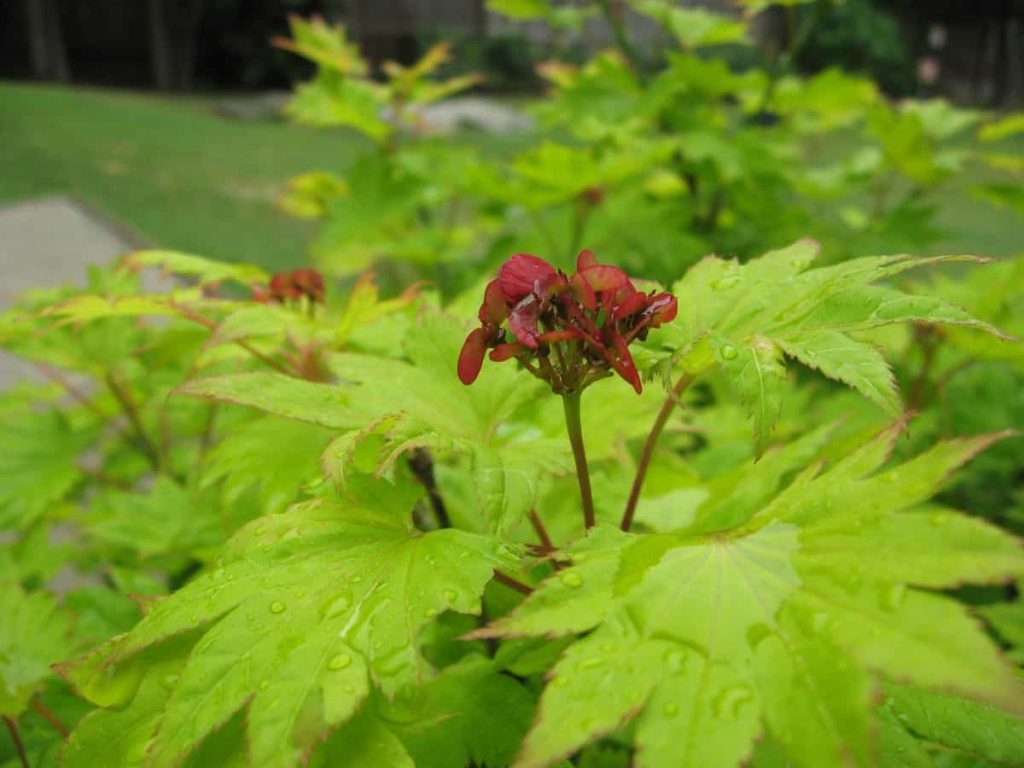
Japanese Maple plant care instructions
- Japanese Maples need water, air, nutrients, and stability to grow well in pots or containers.
- Sun – Always meet the sun requirements of the location with the Japanese Maple you choose. Most Maples that get good sun will also take the part sun. However, part sun or shade Maples will not tolerate full sun.
- Drainage – Japanese Maples prefer moist but not soggy soil. Wet soil will lead to root rot, the most common killer of Japanese Maples in containers and the ground. The soil mix must hold water evenly throughout the container and allow for drainage.
- Maintain nutrition – The mixture should have the ability to retain applied nutrients while facilitating the roots’ ability to absorb them and distribute them to all parts of the tree.
- Support or stability for roots – A good soil mixture will provide conditions for developing a strong root system. In addition, a strong root system will affect a strong tree that withstands unfavorable or windy conditions.
Best fertilizers for Japanese Maples
For Japanese Maple trees, slow-release granular fertilizers with low nitrogen levels are recommended. Fertilizer must be applied in late winter or spring after the last frost. Standard lawn fertilizers should not be used because they contain too much nitrogen, which can weaken the tree. To keep your
Japanese Maple thriving and colorful, you must provide it with proper care and fertilizer. Purchasing the right fertilizer is essential to keeping your Japanese Maple vibrantly beautiful, but knowing when and how to apply it is just as important. Applying too much fertilizer too often can seriously affect the health and growth of your tree.
When to fertilize Japanese Maples?
Apply a slow-release or controlled-release fertilizer in late winter or after the last frost in spring. It encourages slow, methodical growth and allows Japanese Maples to develop study stems and vibrant foliage.
Where to fertilize Japanese Maples?
A slow-release granular/pellet fertilizer should be placed between the truck and the drip line of the branches. Spreading the fertilizer over the soil is not recommended as it can affect the effectiveness of the compost. Instead, dig a small hole between the drip line and the trunk, and add compost to each. Remember to distribute the appropriate amount of food evenly between the compost holes. Then, fill the holes with soil and water the soil around the tree.
Move a Japanese Maple without killing the plant
Tips on How to Transplant Japanese Maples;
- Dig Japanese Maples to within 2 feet of the trunk.
- Transplant only in early spring during cloudy weather.
- The day before transplanting, water the tree with 2-3 gallons. Dig to minimize root damage. Once dug up, move the plant to its new location without delay.
- Place the root ball in the hole, so the trunk is not buried in the ground. Then, backfill the area with improved soil and tamp it down lightly.
- Water the Japanese Maple with 2 gallons of water and mulch the surface with organic material.
In case you missed it: Flowers Growing Season Chart in India: Sowing Guide, Germination, and Planting Calendar
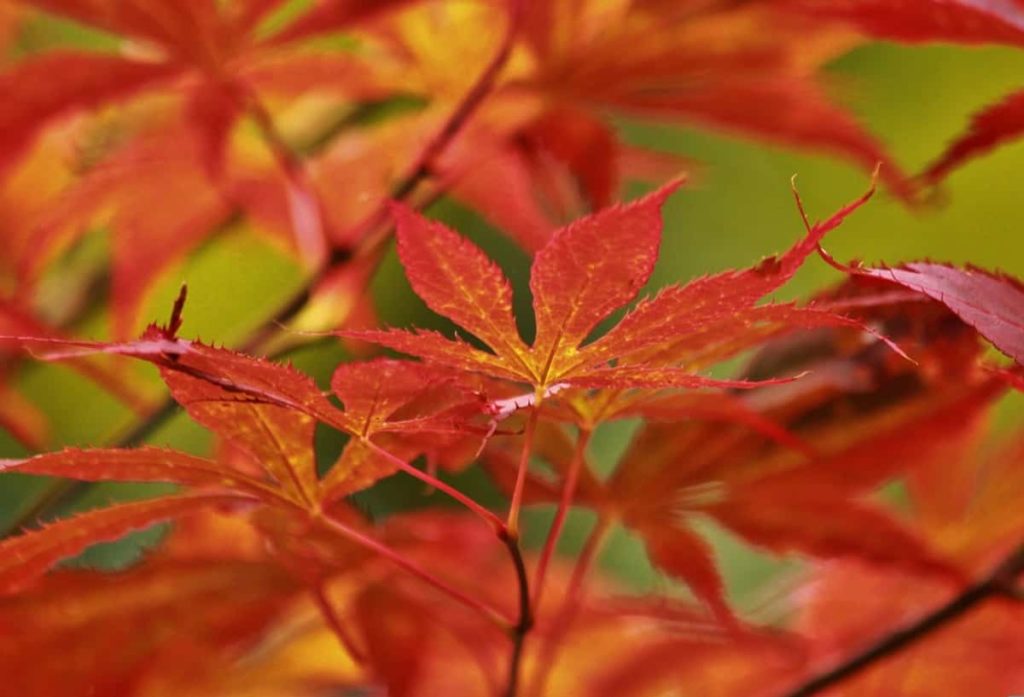
Why prune Japanese Maples?
There are many reasons for pruning. The main reasons are related to the tree’s health, while aesthetics also play a large role.
- To direct development and structure – By pruning, you can direct the growth habits and affect the tree’s structure as it grows.
- Improve airflow – Increased airflow through the branches reduces the chance of disease.
- Remove dead, diseased, or damaged branches – They should always be removed first for the tree’s health.
- Prevent unwanted growth – If a branch grows into a power line, roof, or undesirable area, it should be removed.
- Reduce weight – If a branch is too heavy, pruning can reduce its weight.
Pruning Japanese Maple plants
First pruning Japanese Maples is often unnecessary and can affect the natural beauty of your growing tree. Because Japanese Maples are all uniquely different and grow in their unique way, you want to prune them as little as possible so that you can fully appreciate the individual beauty of each Japanese Maple tree.
That said, it’s your tree, and you can change it into the shape you want with some thought and careful pruning. Pruning is an essential part of growing container Japanese Maple plants. Try not to prune your Maples during the rainy season. Damp environments can make some Maples more susceptible to bacterial and fungal diseases. However, June to August is aesthetically suitable for pruning, as you can see the trees’ leaves and overall shape. Cut off dead, diseased, or damaged branches, then prune them to shape.
To control the chance of spreading disease, clean your pruners with alcohol after each cut, especially if cutting off dead or diseased branches. The purpose of pruning is to promote your tree’s natural growth habit. You may want to consider removing different types of branches from your Japanese Maple.
- 1. Broken, dead or diseased branches. All of them have to go for obvious reasons. So harvest them when you see them.
- 2. Branches growing inward or in the wrong direction. They can be fun. So, if you like them, leave them too. They won’t harm your Japanese Maple tree. But ingrown branches can cause many problems, so get rid of them.
- 3. Crossing branches result in rubbing and damage to bark and branches. It can promote disease and pests. Cut off one of the branches.
Pest, diseases, and their control for growing Japanese Maple plants
Japanese Maples are relatively trouble-free. However, root rot diseases, pythium, verticillium, or fusarium are significant problems. Keeping the Maple tree healthy is the best way to prevent root rot. Keep soil consistently moist and not constantly wet. Aphids, spider mites, and beetle or moth larvae are occasional pests that may need to be controlled once in a while. However, gardening would be much easier if all plants had a few bugs, like Japanese Maples.
The most common Japanese Maple pest is the Japanese beetle. These leaf feeders can defoliate a tree in a matter of weeks. Other Japanese Maple pests are scale, mealybugs, and mites. Although these Japanese Maple bugs can attack trees of any age, they are most commonly found in young trees. All these insects are present as small spots or cottony dots on twigs and leaves. In addition, they often produce honeydew that attracts another Japanese Maple problem, sooty mold.
In case you missed it: Organic Farming in Sikkim: Crops Grown, Starting Ideas for Beginners
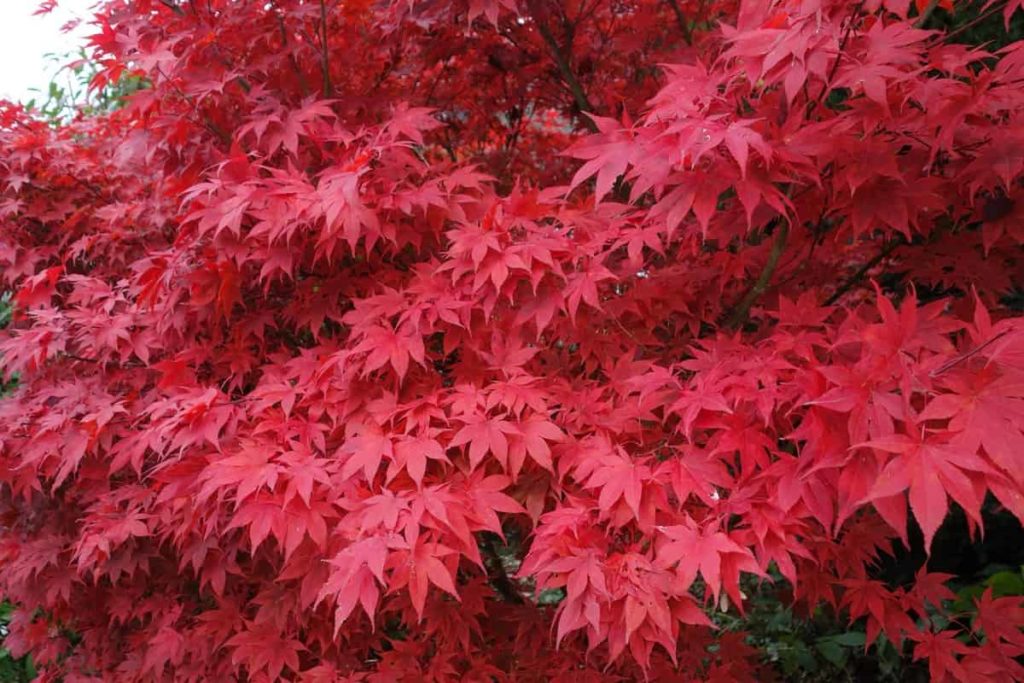
Fungal infections cause the most common Japanese Maple diseases. Cankers can invade through damage to the bark. The bark oozes juice from the pores. A mild case of canker will resolve on its own, but a heavy infection will kill the tree. Verticillium wilt is also another Japanese Maple disease. It is a soil-dwelling fungus with symptoms that include yellow leaves that drop prematurely.
It affects only one side of the tree, leaving the other side looking healthy and normal. Sapwood can also be colorless. Moist, sunken lesions on leaves are a symptom of anthracnose. The leaves eventually rot and fall off. Again, mature Japanese Maple trees will probably recover, but young trees may not.
Water requirement for Japanese Maple plant growth
Japanese Maples when the soil in the root zone is 1 to 2 inches dry. Use at least 2 gallons of water when watering. This watering pattern must be followed for the first 2 years after planting a Japanese Maple. Japanese Maples do not tolerate much water at all.
So, the soil in which they grow must be well-drained. Also, water should not collect near the tree, such as from roofs, ponds, streams, etc. Also, watering on a schedule is a surefire way to overwater a Japanese Maple. For example, if you water once a week without paying attention to the weather and soil moisture, Maple roots will begin to rot.
Frequently asked questions about Japanese Maple plants (FAQ)
Why are my Japanese Maple leaves curling and turning brown?
Japanese Maples can suffer from a disease called Verticillium Wilt, which causes browning and curling of the leaves (although this is usually limited to individual branches rather than overall browning). Keep the tree healthy by providing adequate water and fertilizer to control this disease.
Can you root Japanese Maple cuttings in water?
Roots in water are less likely to grow because stagnant water will deprive the roots of the oxygen they need to grow. Japanese Maples need a lot of oxygen to spread, and submerging the cutting in water will rot the roots before they develop.
Can Japanese Maple be propagated from cuttings?
Although commonly propagated from seeds and grafts, Japanese Maples grow well from softwood cuttings collected in summer. Cuttings require moderately strong hormones and a suitable medium to root successfully, but it is a quick and easy process with a high success rate.
How do I know if my Japanese Maple is dying?
Like all plants, the Japanese Maple shows symptoms when stressed or dying. The initial appearance can usually be seen as scorching, scorching, and eventually premature drop of the leaves and foliage. The leaves lose their vibrant natural color and turn yellow to dark brown over time.
In case you missed it: How to Start Exotic Flower Farming in India: Production and Growing Guide for Beginners
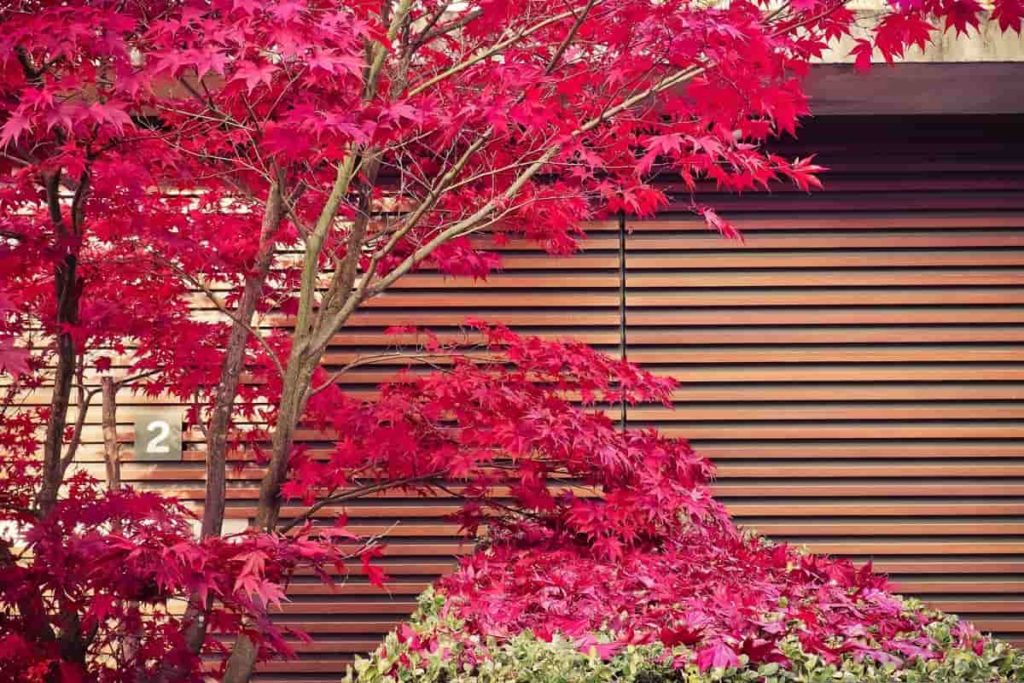
To determine if your Japanese Maple tree is dead or dying:
Cut a chunk of bark off the trunk or branches. If the underside of the wood looks green, the tree is still alive and will likely survive. If the part is brown, then that part is already dead. Observe and note if the leaves curl and drop, as this may indicate that the tree is in poor condition.
Why is my Japanese Maple dying?
Dying Japanese Maple is often caused by fungal disease pathogens that thrive in over-wet soil. Saturated soil promotes root rot conditions that cause Japanese Maples to die. Too much sun, wind, and not enough water can also cause Maples to turn brown, withered leaves, and wilt.
How often does a Japanese Maple need to be watered?
Plan to water twice a week in normal weather and three or four times a week during drought. Whether the tree is young or mature, it will grow best in soil that is kept consistently moist through regular watering and mulching.
Does Japanese Maple like sun or shade?
Ideally, they must be placed in a location with partial shade. However, Japanese Maple plants are prone to leaf scorch in hot, dry locations in full sun. Scorched leaves develop brown margins and often fall from the tree mid to late summer.
Conclusion
The Japanese Maple is a slender tree that grows slowly but is a hardy and low-maintenance plant once established. Japanese Maples are a popular addition to any yard or garden. The bright foliage of many Maple species adds a splash of brilliant red to any green landscape.
- Types of Pesticides Used in Agriculture: A Beginner’s Guide
- Economical Aquaculture: A Guide to Low-Budget Fish Farming
- 15 Common Planting Errors That Can Doom Your Fruit Trees
- How to Make Houseplants Bushy: Effective Tips and Ideas
- Innovative Strategies for Boosting Coconut Pollination and Yield
- Pollination Strategies for Maximum Pumpkin Yield
- The Complete Guide to Chicken Fattening: Strategies for Maximum Growth
- Natural Solutions for Tulip Problems: 100% Effective Remedies for Leaf and Bulb-Related Issues
- Revolutionizing Citrus Preservation: Towards a Healthier, Greener Future
- Natural Solutions for Peony Leaf and Flower Problems: 100% Effective Remedies
- Maximizing Profits with Avocado Contract Farming in India: A Comprehensive Guide
- Natural Solutions for Hydrangea Problems: 100% Effective Remedies for Leaf and Flowers
- The Ultimate Guide to Choosing the Perfect Foliage Friend: Bringing Life Indoors
- From Sunlight to Sustainability: 15 Ways to Use Solar Technology in Agriculture
- The Ultimate Guide to Dong Tao Chicken: Exploring from History to Raising
- The Eco-Friendly Makeover: How to Convert Your Unused Swimming Pool into a Fish Pond
- Mastering the Art of Delaware Chicken Farming: Essentials for Healthy Backyard Flocks
- 20 Best Homemade Fertilizers for Money Plant: DIY Recipes and Application Methods
- How to Craft a Comprehensive Free-Range Chicken Farming Business Plan
- Brighten Your Flock: Raising Easter Egger Chickens for Beauty and Bounty
- How to Optimize Your Poultry Egg Farm Business Plan with These Strategies
- Subsidy for Spirulina Cultivation: How Indian Government Schemes Encouraging Spirulina Farmers
- Ultimate Guide to Raising Dominique Chickens: Breeding, Feeding, Egg-Production, and Care
- Mastering the Art of Raising Jersey Giant Chickens: Care, Feeding, and More
- Ultimate Guide to Raising Legbar Chickens: Breeding, Farming Practices, Diet, Egg-Production
- How to Raise Welsummer Chickens: A Comprehensive Guide for Beginners
- How to Protect Indoor Plants in Winter: A Comprehensive Guide
- Ultimate Guide to Grow Bag Gardening: Tips, Tricks, and Planting Ideas for Urban Gardeners
- Guide to Lotus Cultivation: How to Propagate, Plant, Grow, Care, Cost, and Profit
- Agriculture Drone Subsidy Scheme: Government Kisan Subsidy, License, and How to Apply Online
- Ultimate Guide to Raising Araucana Chickens: Breed Profile, Farming Economics, Diet, and Care
- Bringing Hydroponics to Classroom: Importance, Benefits of Learning for School Students
- Ultimate Guide to Raising Polish Chickens: Breed Profile, Farming Economics, Diet, and Care
- Ultimate Guide to Raising Australorp Chickens: Profile, Farming Economics, Egg Production, Diet, and Care
- Silkie Chicken Farming: Raising Practices, Varieties, Egg Production, Diet, and Care
- Sussex Chicken Farming: Raising Practices, Varieties, Egg Production, Diet and Care